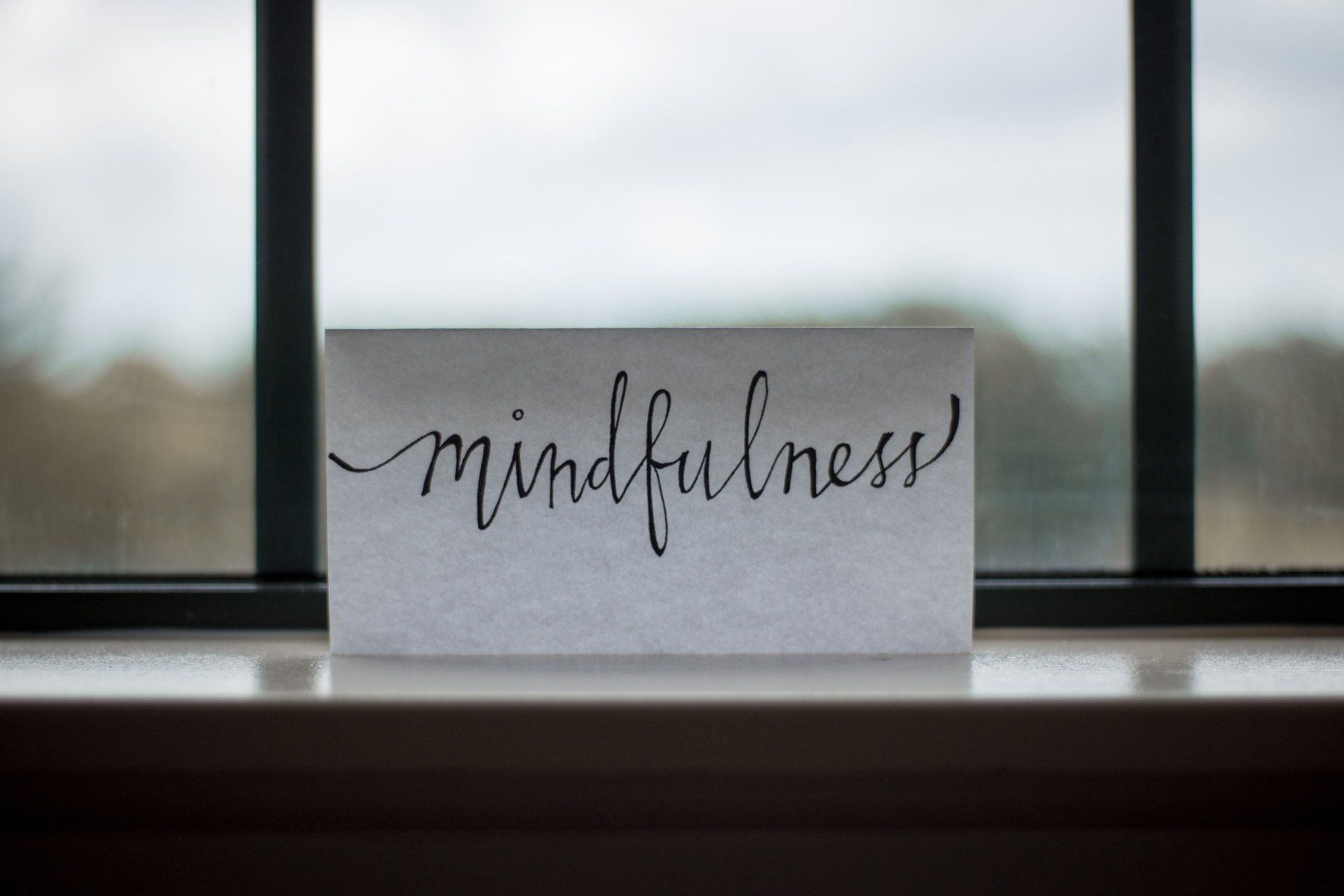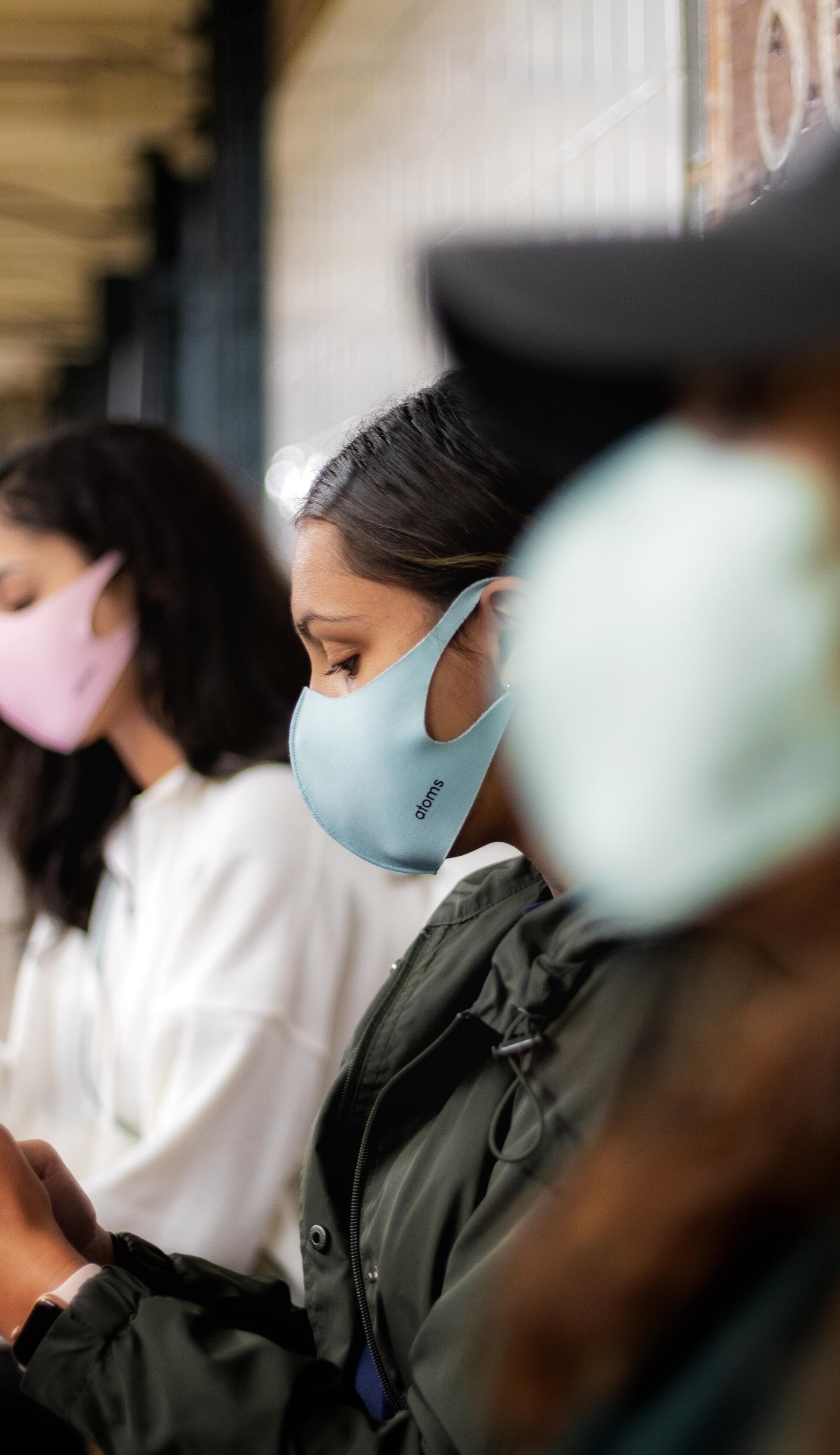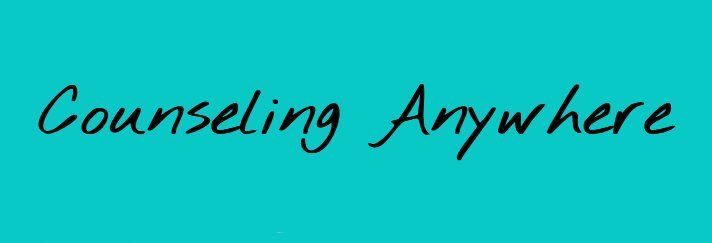14 Benefits of Teletherapy for Clients
Goali Saedi Bocci Ph.D. • January 29, 2019
Online counseling is the new frontier. Reasons to consider taking the plunge.
In our digital revolution, innovation is ever rapidly changing our daily lives. Adapting, whether as digital immigrants or natives, is required to survive anymore. Why then, do we keep revisiting antiquated ways of doing things? As therapists we know that much has changed in the landscape of psychotherapy. What was once therapy sessions generously covered under insurance benefits during the Golden Age of Therapy 25 years ago (Grodzki, 2015), has been hacked away by modern HMO companies requiring endless streams of codes and paperwork. Further, wait times in rural and large cities for therapy services increase as coverage decreases. Online therapy options are the new frontier. One that many may resist, but that ultimately provide major benefits to clients and therapists alike.
Having recently moved to a fully virtual therapy practice using live video (e.g., like FaceTime but using HIPAA-compliant technology), the benefits have been immediate and in many ways unexpected. It is no surprise that telehealth is currently a 6 billion dollar industry with estimates that it will reach close to 20 billion dollars in 2025 (HCInnovation, 2018). While I initially dabbled with teletherapy more by accident than intention (starting with college students in-state living 2-3 hours away from my office), I quickly came to see it benefits for a much larger range of clients. Below, are listed some of the most notable benefits to date.
1. Low Barrier to Entry: One of the biggest challenges facing prospective therapy clients is that initial appointment. Statistics indicate the modal number of sessions attended by clients is: one. That’s right, patients will go to one session and never go back again. Theories abound—the experience was awful, there was not a fit with the therapist, or the most self-satisfied of them all- the therapist was so highly effective that they managed to “cure” their client in one majestic session (likely not the case). How does telehealth fit in? An easy way to describe it is this—all those things you hate about your dentist waiting room? They apply in therapy as well. Finding the office, sitting, anxiously counting down the time, waiting for your name to be called. With teletherapy, it’s almost always in the comfort of your own home. You can have your cozy blanket, your special mug, all the things that make you feel at ease. What better start to therapy and opening up than in your safe space?
Having recently moved to a fully virtual therapy practice using live video (e.g., like FaceTime but using HIPAA-compliant technology), the benefits have been immediate and in many ways unexpected. It is no surprise that telehealth is currently a 6 billion dollar industry with estimates that it will reach close to 20 billion dollars in 2025 (HCInnovation, 2018). While I initially dabbled with teletherapy more by accident than intention (starting with college students in-state living 2-3 hours away from my office), I quickly came to see it benefits for a much larger range of clients. Below, are listed some of the most notable benefits to date.
1. Low Barrier to Entry: One of the biggest challenges facing prospective therapy clients is that initial appointment. Statistics indicate the modal number of sessions attended by clients is: one. That’s right, patients will go to one session and never go back again. Theories abound—the experience was awful, there was not a fit with the therapist, or the most self-satisfied of them all- the therapist was so highly effective that they managed to “cure” their client in one majestic session (likely not the case). How does telehealth fit in? An easy way to describe it is this—all those things you hate about your dentist waiting room? They apply in therapy as well. Finding the office, sitting, anxiously counting down the time, waiting for your name to be called. With teletherapy, it’s almost always in the comfort of your own home. You can have your cozy blanket, your special mug, all the things that make you feel at ease. What better start to therapy and opening up than in your safe space?
2. Privacy:
While this can certainly vary depending on geographical location and the diversity of clients seen by a therapist, teletherapy ensures maximal privacy every time. As one who specializes in teens and young adults, I have found more than once that my clients (even going to different schools and residing in different cities) manage to know one another. I have walked in (and out of my office) on more than one occasion witnessing awkward small talk between these clients who knew each other in kindergarten or who are mortal enemies. With social media anymore, everyone is connected. While I have often managed to help teens find the silver lining of running into acquaintances (we all have issues, therapy is normalized), teletherapy removes this concern altogether.
3. Efficiency:
Time is perhaps our most precious resource. As such, commutes can be frustrating and stressful for clients already prone to anxiety. Unexpected traffic closures often lead clients to race in, anxious about being late or missing any part of their therapy time. In one scenario I had a patient get into a car accident on the way over to see me. Needless to say, our conversation that session wound up focusing on something entirely different than what we had intended. With enough on their brimming plates, the last thing clients need to worry about is one more place to be. And for that matter, one extra cost if parking tickets or accidents are involved.
4. Flexibility: Relatedly, teletherapy allows for maximal flexibility for overworked and overcommitted clients. Having worked with many high achieving populations who are at the verge of mental breakdowns, those who need services the most often have the least time. Being able to reschedule and integrate emergency sessions impacts the therapist and caseload at large minimally. Although of course high severity patients should rarely be seen in outpatient situations without extra staff support, for clients with severe anxiety that is otherwise well managed, the ability to schedule an emergency check-in can be invaluable.
5. Safety:
Across much of the nation, severe winter weather can put a kink in plans. In Oregon where an inch of snow shuts down the city, snow days can wreak havoc on scheduling. Some clients are stranded on mountain tops, others have four-wheel drive and trek their way to an office that closed down hours ago. Such concerns are eliminated in teletherapy. Further, there is no expectation that clients leave their homes in dangerous weather, there are no late cancellation fees, or consideration of what school districts are opened or closed. With teletherapy, the show can go on, each time.
6. Illness:
It is not uncommon for teens with heavy workloads and many pressures to repeatedly succumb to illnesses. I have had clients with severe flus and viruses (often actively contagious) come in which puts me and by extension my other patients at risk. Further, illness often can cause additional last minute cancellations while mood plummets. The ability for clients to continue working with their therapist, especially when ill, can be highly impactful. Teletherapy makes it safe for both clients and therapists.
7. Patient Timeliness Improved:
When sessions begin at the click of a button, timeliness is certainly improved. Without the concern of a traffic jam, getting lost on their way to the office, or running low on gas, it is a no-brainer that timeliness is significantly improved when clients are always in reach of their devices.
8. Communications Improved: Like many therapists working independently, prior to moving to a full-time virtual practice, I rented a space in an executive office suite. While there were front desk staff servicing the floor, they also represented dozens of other entities from lawyers to accountants to real estate agents. With high turnover on their staff, messages were often missed, and information was not always clearly articulated (such as the time I was told a patient came in for me on a day I was not scheduled- there was no name, number, nothing leaving me guessing who on my caseload came in for an appointment!). Removing the middleman so to speak eases communication significantly and improves the overall therapeutic experience.
9. Streamlined Communication:
One of the most integral components of my practice is my online billing, scheduling and charting program which also offers teletherapy directly via secure link. Clients can opt for a reminder text, email, or both and all the information regarding their appointment is at their fingertips. While this unfortunately sounds like advocacy for the takeover of robots, the truth is these programs simply don’t make errors but for exceedingly rare glitches. Having everything in one place is beautifully simple and fits in with the general ethos of teletherapy. In rare times when two patients have shown up for the same session, I have always felt terrible sending them home again when I know they rushed to get there. With teletherapy, when these rare errors occur, there is no harm, no foul.
10. Access to Facilities, Food, Drink, etc.:
As a therapist to many teens who are often rushing over from school or other activities, I have more than once encountered a ravenous and therefore grouchy teen. I have often supplied my office with healthy snacks and drinks and watched teens polish off bag after bag of snacks while telling me about their day. While I don’t encourage eating for the full duration of therapy, a satiated client whose basic needs are met is certainly important. As such, one of the benefits of teletherapy is access to any of the needs that may come up for a client, down to a bathroom with no line (or worse, risk of running into the therapist in the next stall over!).
11. Access for Remote Patients:
More times than I can count, I have done a double take when I have reviewed a new client’s file and seen their home address listed in a city about an hour away. In one case, it was a teen living with an elderly grandmother who would drive through wind and rain and on windy dangerous roads to get to my office. It was dangerous for them and frankly unnecessary. When we switched to teletherapy, the therapeutic relationship was maintained, the therapy continued effortlessly and there was no disruption for this family. If anything, our clinic likely saved some harm to the teen and the driving grandmother whose vision had been slowly deteriorating over time.
12. Access for College Students:
The fact that college counseling centers are more and more swamped is hardly news to those who have worked in such settings. Further, not all colleges are in towns with access to private providers, nor do all college students even have cars. Enter the beauty of access to a wide network of providers without any transportation hassles. As previously discussed, my earliest work in teletherapy came out of necessity for college students who either could not be seen at the college counseling center or who did not feel comfortable walking into the center and being seen by friends.
13. Access for Disabled Populations:
In many scenarios, those who are bedridden, have chronic illness or otherwise can be major beneficiaries of online treatment options. There are times when clients suffering from IBS, Crohn’s or other diseases may experience shame or embarrassment at their need for leaving to use facilities. In an online context, some of these concerns can be diminished significantly. Further, wheelchair accessibility can be a significant barrier with populations as well; I recall working with one patient and quickly learning we had to make sure to use a room with a door wide enough to let the chair pass, as well as extra room for the wheelchair to maneuver into position. While ideally, more locations will be ADA-accessible, the unfortunate reality is that in older locations, historic buildings, and so forth, making these changes can take time and in other cases be impossible.
14. Wait Times Reduced:
Finally, perhaps obvious but well worth stating is the benefit of near immediate access. Having worked in large clinics, I have observed insurance teams taking weeks to confirm benefits, process paperwork, and possessing other bureaucratic hassles. For clients able to see private practitioners, access can be near immediate. To be frank, that is one of my favorite parts of solo practice—for too many years I witnessed those in severe need go weeks until they could get an appointment. With virtually all aspects of my practice being paperless and electronic, I can send paperwork to the patient via secure connection, have it filled out, and sent back to me within the day. Most often I can accommodate patients within a week, if not within 24 hours depending on how quickly we can get things going. For clients who are in need to talk to someone urgently, or perhaps finally mustered up the courage to see someone, often waiting weeks can lead to appointment cancellations or clients in dire situations.
While there is no doubt that much more needs to be done before clients and therapists fully embrace and explore online therapy options, the future certainly looks bright. With more and more individuals telecommuting, busier schedules, and the need for greater flexibility in our ever changing world, teletherapy opens up a whole new frontier.
To read more articles from Goali Saedi Bocci Ph.D. , Click Here

Mindfulness encompasses a variety of definitions although most are similar in concepts. Mindfulness is described as an awareness that arises from purposely paying attention in the present free from any judgements. Mindfulness is a state of awareness of ones emotions, thoughts, and sensations when each occurs. A third definition of mindfulness is a nonjudgmental state of awareness of present experiences. Various interpretations exist dependent on the context in which mindfulness is being examined. For example, mindfulness can be examined in improving emotional regulation and as a coping tool for stress management. Mindfulness is being in the present moment in ones body in a fully conscious state, aware of ones own experiences without judgement or narrative- just being in the moment in the here and now with an acceptance of how things are; being aware of our own thoughts, emotions, sensations without being caught up in them- an outside observer of self with an awareness of the moment. Mindfulness can be used throughout the day when walking, eating, and whenever feeling emotionally “charged” to step back and observe internal experiences. Yoga, meditation, and breathing are a few ways to cultivate mindfulness. Being mindful allows for intentional actions and responses rather than living on autopilot without being aware. The benefits of mindfulness are plentiful, and a regular practice is beneficial for enhancing wellness. Being able to stop and really get into the here and now and out of automatic unconscious living enhances feelings of well-being and an ability to respond more effectively with emotional control. Mindfulness can improve experiences and interpersonal relationships alike. Mindfulness is Intentional Living. Give it a try and see what happens. How do you define mindfulness? How do you cultivate mindfulness in your daily life?

Each day in the United States, an average of 3.1 million COVID-19 vaccines are going into people’s arms. According to an April 9 White House briefing, a quarter of the country's adults are now fully vaccinated. The pandemic is not yet over, but vaccination could soon yield a much more normal life, especially for those who have been vaccinated. The Centers for Disease Control and Prevention, for example, now recommends that fully-vaccinated people can visit with each other indoors and travel without quarantining. But for many, reopening comes with its own set of anxieties. According to APA's Stress in America polling, around half of people say they feel uneasy about readjusting to in-person interaction post-pandemic. Ellen Hendriksen, PhD, a clinical psychologist at Boston University's Center for Anxiety and Related Disorders and author of How to Be Yourself: Quiet Your Inner Critic and Rise Above Social Anxiety , is an expert at clinical strategies for calming anxiety. She spoke to APA about what's driving post-pandemic anxiety and how psychologists can best help. What do you think is driving the anxiety many people are feeling about reopening? Anxiety is driven by uncertainty. There is so much uncertainty right now, from the vaccine roll-out to society reopening to the new normal workplace to the virus and the variants themselves. Every day there is more evidence that vaccines keep us and people around us safe, but there are lingering questions about how long immunity lasts, how susceptible kids are to COVID-19, and when they will get vaccinated. Nobody alive today has ever emerged from a global pandemic into a digital world and navigated this before. We're making it up as we go along, so of course we're anxious. Here at the Center, we have the longest waitlist in our 25-year history. So many people are emerging from the pandemic feeling exhausted, burned out, anxious, or depressed. Collectively, our resources are low, which makes it harder to navigate the layers of uncertainty. How can people handle social anxiety and awkwardness around different levels of comfort as places reopen? The fact that reopening is a moving target makes it difficult to align with other people. You and your bubble might be ready to dine in at a restaurant or get on a plane, but the family next door might have a child who is immunocompromised and is living as they were in January. There are more variables to manage compared with before the pandemic. Plus, social anxiety is driven by avoidance, and we've all been avoiding social interactions for the better part of a year. The fact that we're all rusty is going to make us feel wobbly as we re-enter. It's OK to say we don't know how to do this, and it's OK to ask people what they're comfortable with. That normalizes the uncertainty and awkwardness, and it's quite validating to say, “What are we doing?” or “How does this work?” It can help you feel like you are united with the other person against this larger problem, as opposed to negotiating one against the other. This is a strategy borrowed from couples therapy, where it is often highly effective. How can people feel more comfortable with re-entry? There's one question I've been getting over and over from people who struggle with social anxiety. They'll say, "I did so much work pre-pandemic to get to the point where I could give a presentation or raise my hand in class." They’re worried they’ll be back at square one when they are again in large groups. But social confidence is like a muscle. If you have done work on your social anxiety in the past, that architecture is still there. It will feel awkward at first, but it will come back faster than the first time around. As for feeling comfortable returning to everyday activities, there are dozens of points of re-entry. There will be a first time on public transportation, a first time in someone's house, a first time taking a rideshare. We'll work our way up to large gatherings. Just because you feel rusty or nervous doesn't mean you're doing it wrong. It means you're getting back out there. Your brain will recalibrate with experience. We all need love, support, and community. Studies show that the quality of our relationships predict our future health, happiness, and even longevity, so it's worth it to push ourselves a little to get the interaction we all need, even if we are the most introverted of introverts. What should psychologists keep in mind for helping their clients right now? Psychologists have a big job ahead of us. It may be hard to balance supporting and pushing our clients simultaneously. It’s important to support each individual’s comfort level and choices, but psychologists also need to notice and address life-limiting avoidance. These are anxious, uncertain times, but there is also a sense of hope and renewal. It is an honor that we as psychologists get to play a leading role. Article by Stephanie Pappas from the American Psychological Association (APA)

Imagine you are sitting in a car, and you are driving down a lonely highway. Suddenly, in the middle of nowhere, a warning light goes off. Your oil pressure is very low. If you just ignore it and continue your drive, you run the risk of doing serious damage to your engine. You know you can get a tow, but this is going to take a while. As you are considering your next step, you suddenly remember a trick about how you can short circuit the warning light. This would not change anything about the engine—it would still be starved for oil—but the low-pressure signal would no longer be blinking on your dashboard, and you could ignore it more easily. Here’s the question: Should you do it? Unless you are seriously intoxicated (at which point you shouldn’t be driving at all), you won’t hesitate to say “no” to that impulse. Rightly so. Turning off the light will not do anything for you. The light is just the messenger, and not the problem in itself. Instead, you would be better advised to take in the information and deal with the situation. This is easy and intuitive to understand when it comes to external problems like car maintenance. It’s much more confusing, however, when the problems occur internally. When we are confronted with difficult emotions like anxiety, depression, stress, grief, anger, or loneliness, we are quick to search for the off-button on our emotional dashboard instead of taking in the messages they contain. Make it stop! Give me the wine and cigarettes. Let me cancel this appointment. Engage me on social media. Show me the movies and video games. Do whatever, but just make it stop! This is often our first response when difficult emotions show up: We try to mute the signal. But emotions are not the problem. They are merely messengers. And the messages they carry deserve at least to be heard. They often contain important lessons, and can call us to helpful actions. Often they show us opportunities. What Emotions Can Signal Fear might show us that danger is up ahead, and we better prepare ourselves. Loneliness might urge us to prioritize close relationships. Grief might open us up to what is important and meaningful to us, while calling out for social connection and support. Your dashboard doesn’t need to be covered up. It needs gentle attention. No, the dashboard isn’t everything—you still have a road to see and navigate. When emotions arise, you can ask yourself: “What am I feeling right now?” and “Where can I feel it?” and “What does my emotion ask me to do?” and “What does this suggest I am yearning for?” No one turns their driving over to a dashboard, but questions like these help our emotions play their proper role. If it were just negative emotions, this “turn off the indicator” move would be bad enough, but we are similarly incompetent when it comes to positive emotions. Imagine noticing on your car’s dashboard that your fuel tank is full. Oh, joy! You want it to stay this way, and so you decide to rewire so that the gauge always remains full. And people avoid positive emotions too! When we feel joy, we sometimes focus on how we will feel when it goes away, so we try never opening up to joy at all. That would be like the person who just disconnects the fuel gauge altogether so that she will never be disappointed when the fuel runs out because she never allowed herself to notice it was full in the first place. All of this is self-defeating, and yet it’s exactly what many of us do when we feel happy or sad or anxious or hopeful or depressed or satisfied. We like feeling this way, and never want it to stop, and so we cling onto this pleasant feeling, in the hopes of never losing it. Or we detune so it won’t be noticed when it stops, as if being numb is the definition of happiness. We dislike feeling this way, so we push it away as if feelings are the enemy. Feelings are not just about like and dislike. They are how our past and present impact us. They help train our ability to notice what is present, based on what we’ve experienced in the past. They’re like dashboard gauges that help us adjust to the challenges of our life journey. Emotions are temporary. They aren’t meant to be avoided, nor are they meant to be clung to. They are meant to come and go, flowing through you in their own time. They contain important lessons when things are off, and beautiful rewards when things fall into place. Allowing emotions to be there when they occur, to listen closely to their message, to feel them fully with neither clinging nor needless defense, allows them to serve their proper role. Your emotions are not the problem, so feel fully, embrace the change, move forward, and learn how to drive. For more on the Author: Steven C. Hayes, Ph.D.


